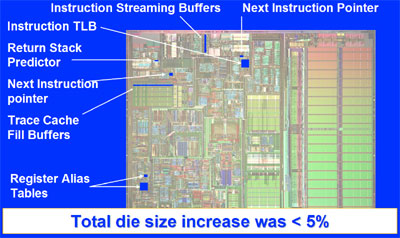- Aug 26, 2013
- 117
- 7
- 81
Are there any major consumer relevant drawbacks / cons in the implementation of hyper-threading? Essentially, what has to be sacrificed in the doubling of a chips total threads? Similarly, hyper-threading and competing virtual core solutions seems to be a no brainer to amplify a chips performance in certain scenarios without increasing the die size, so why is this not yet a commodity in the chip market?
I know there are probably major flaws in the logic behind my assumptions, but I have failed to find a suitable answer to this question that has been knawing at my brain regarding the entire industry!
I know there are probably major flaws in the logic behind my assumptions, but I have failed to find a suitable answer to this question that has been knawing at my brain regarding the entire industry!



